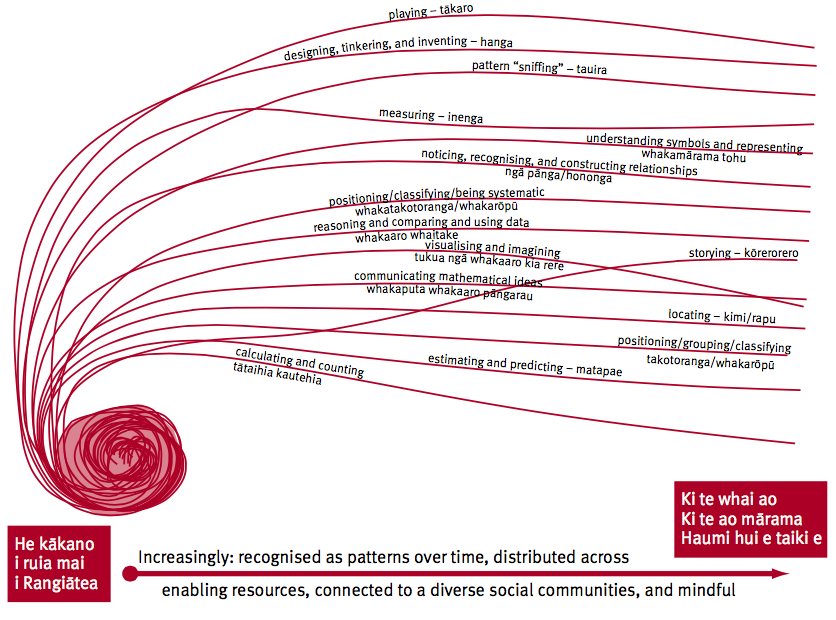Kei Tua o te Pae
Kei Tua o te Pae/Assessment for Learning: Early Childhood Exemplars is a best-practice guide that will help teachers continue to improve the quality of their teaching.
The exemplars are a series of books that will help teachers to understand and strengthen children's learning. It also shows how children, parents and whānau can contribute to this assessment and ongoing learning.
We are making improvements to our download-to-print functionality. So if you want a printed copy there are PDF versions available at the bottom of the main cover page.
Book 18: Mathematics – Pāngarau
Introduction
The exemplars in this book should be considered in conjunction with the discussion in Book 16. A definition of mathematics and statistics in The New Zealand Curriculum includes the statement:
"Mathematics is the exploration and use of patterns and relationships in quantities, space, and time. Statistics is the exploration and use of patterns and relationships in data. These two disciplines are related but different ways of thinking and of solving problems. Both equip students with effective means for investigating, interpreting, explaining, and making sense of the world in which they live." 1
The National Numeracy Strategy uses this definition:
"To be numerate is to have the ability and inclination to use mathematics effectively in our lives – at home, at work, and in the community." 2
The exemplars in this book record children participating in mathematical practices – exploring relationships and using patterns in quantities, space, and time – for a range of purposes.
Similarly, within the context of Aotearoa New Zealand, an early childhood mathematics working group set up in 2003 by the Ministry of Education developed “te kākano”, a metaphor for describing the range of purposeful activities for developing mathematical tools and symbol systems in a bicultural environment.9 The metaphor represents the child as te kākano (the seed), embedded in a context. The range of mathematical purposes and tools that develop is influenced by the “fertiliser” or “soil” that surrounds te kākano. These influences include teacher pedagogy, teacher content knowledge, family/whānau knowledge, and resources, all of which interact with the child’s interests to privilege particular mathematical domains. The metaphor highlights the value of identifying the range of cultural purposes for mathematics within a setting.
The strands in the Te Kākano diagram cross and interweave in different activities. For example, in one exemplar, calculating and counting, measuring, and designing might all overlap. In another, estimating and predicting might overlap with “pattern sniffing”. Therefore, the names on the seed strands indicate the sorts of strategies and dispositions a teacher might notice. Each of these strands includes possibilities for increasing mathematical complexity.
Te kākano: Purposeful activities for the development and understanding of mathematics symbol systems and technologies

A lens can be placed at any point in the diagram to look in more depth at what is happening for a particular child or group of children. Within the lens, we can see the authentic context in which an activity takes place and the specific detail of the strategies, the dispositions happening there, and the mathematical complexity involved.
Effective Pedagogy in Mathematics/Pāngarau: Best Evidence Synthesis Iteration [BES] includes a chapter on mathematics in the early years, which is consistent with the approach taken here. It draws attention to the value of play and of everyday activities as meaningful contexts for mathematics learning, and it highlights aspects of the factors that nurture te kākano (teacher content and pedagogical knowledge, appropriate resources, and family/whānau mathematics).10
The mathematics exemplars in this book are viewed through one or more of the three lenses outlined in Book 16: a lens that focuses on assessment practices, referring to the definition of assessment as “noticing, recognising, and responding”, from Book 1 of Kei Tua o te Pae;
- a Te Whāriki lens;
- a lens that focuses on the symbol systems and tools described as “mathematics”.
